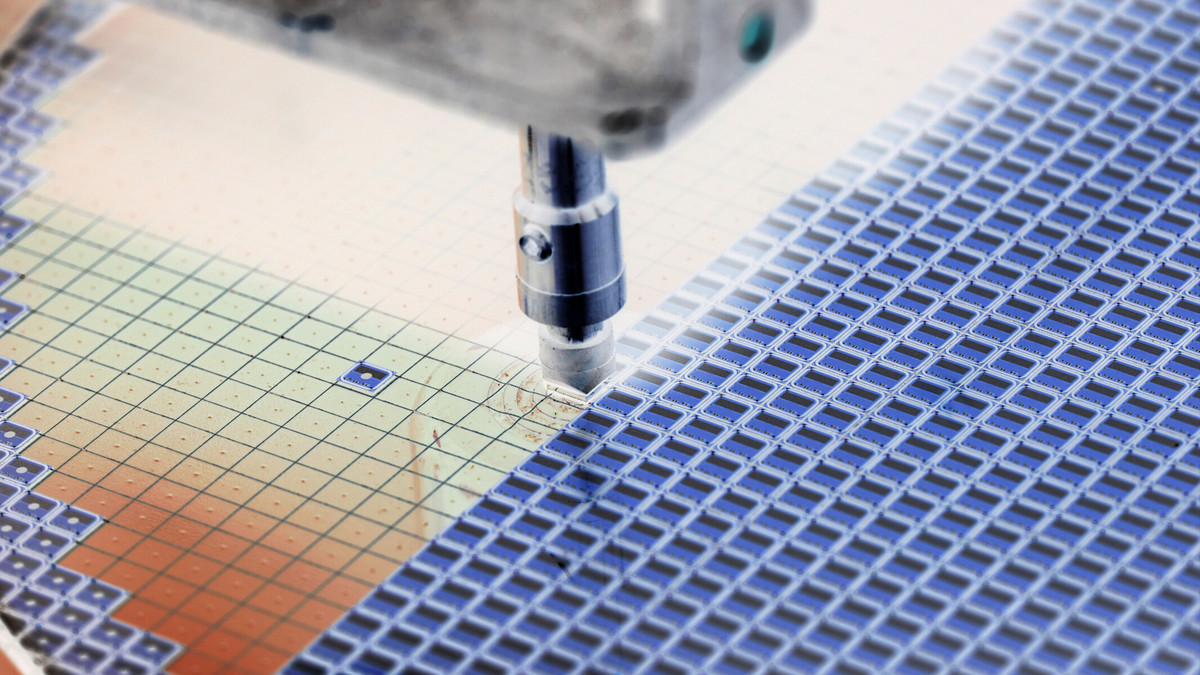The third-generation semiconductor is currently the hottest topic in the high-tech field, and plays an indispensable role in the development of 5G, electric vehicles, renewable energy, and Industry 4.0. What is the third generation of semiconductors? In this article, we will take you to understand this key technology that can affect the future of the technology industry from the most simple and comprehensive perspective.
As the world enters the era of IoT, 5G,
green energy, and electric vehicles, Wide Band Gap (WBG) semiconductors that
can fully demonstrate high-voltage, high-temperature, and high-frequency
capabilities and meet the requirements of current mainstream applications for
high energy conversion efficiency Beginning to become the darling of the
market, semiconductor materials opened the prelude to the new era of the
third-generation semiconductor.
What is the Third Generation
Semiconductor and Wide Energy Gap?
When it comes to the third-generation
semiconductors, let’s first briefly introduce the first and second-generation
semiconductors. In the field of semiconductor materials, the first generation
semiconductor is "silicon" (Si), the second generation semiconductor
is "gallium arsenide" (GaAs), and the third generation semiconductor
(also known as "wide energy gap semiconductor", WBG) is "Silicon
carbide" (SiC) and "gallium nitride" (GaN).
The "energy gap" in wide-gap
semiconductors, in the most vernacular way, represents "one energy
gap", which means "the minimum energy required to make a
semiconductor go from insulating to conducting."
The silicon and gallium arsenide of the
first and second generation semiconductors are low energy gap materials, with
values of 1.12 eV and 1.43 eV respectively. The energy gap of the third
generation (wide energy gap) semiconductors, SiC and GaN reach 3.2 eV and 3.4
eV, respectively. Therefore, when encountering high temperature, high voltage
and high current, compared with the first and second generation, the third
generation semiconductor will not easily change from insulating to conductive,
the characteristics are more stable, and the energy conversion is better.
The Third-Generation Semiconductor Myth
With the advent of the era of 5G and
electric vehicles, the demand for high-frequency, high-speed computing, and
high-speed charging of technology products has increased. The temperature,
frequency, and power of silicon and gallium arsenide have reached the limit,
and it is difficult to increase the power and speed; once the operating
temperature exceeds 100. The first two generations of products are more prone
to failure, so they cannot be used in more severe environments. In addition,
the world has begun to pay attention to the issue of carbon emissions, so the
third-generation semiconductors with high energy efficiency and low energy
consumption have become the new darling of the times.
The third-generation semiconductors can
still maintain excellent performance and stability at high frequencies, and at
the same time have the characteristics of fast switching speed, small size, and
rapid heat dissipation. The volume of the module and cooling system.
Many people think that third-generation
semiconductors, like advanced manufacturing processes, are accumulated from the
technologies of first- and second-generation semiconductors, but this is not
the case. From the picture, these three generations of semiconductors are
actually in a parallel state, and they develop their own technologies. Since
China, the United States, and the European Union are actively developing
third-generation semiconductors, Taiwan, one of the keys to the semiconductor
industry chain, is bound to keep up with this trend.
SiC and GaN Have Their Own Advantages and
Different Development Fields
After understanding the differences of the
first three generations of semiconductors, we then focus on the materials of
the third generation semiconductors - SiC and GaN. The application fields of
these two materials are slightly different. At present, GaN components are
often used in fields with voltages below 900V, such as chargers, bases Taiwan,
5G communication-related and other high-frequency products; SiC is a voltage
greater than 1,200 V, such as electric vehicle-related applications.
SiC is composed of silicon (Si) and carbon
(C), which has strong bonding force and is thermally, chemically, and
mechanically stable. Due to the characteristics of low loss and high power, SiC
is suitable for high-voltage and high-current application scenarios, such as
Electric vehicles, electric vehicle charging infrastructure, solar and offshore
wind power and other green energy power generation equipment.
In addition, SiC itself is a
"homogenous epitaxy" technology, so it has good quality and good
component reliability. This is also the main reason why electric vehicles
choose to use it. In addition, it is a vertical component, so the power density
is high.
Today, the battery power system of electric
vehicles is mainly 200V-450V, and higher-end models will develop towards 800V,
which will be the main market for SiC. However, SiC wafers are difficult to
manufacture, and the source crystals for crystal growth are highly demanding
and difficult to obtain. In addition, the crystal growth technology is
difficult, so mass production is still not possible at present, which will be
described in more detail later.
GaN is a lateral element and is grown on
different substrates, such as SiC or Si substrates. It is a "hetero-epitaxy"
technology. The quality of the GaN film produced is poor. Although it can be
used in consumer areas such as fast charging, it is used in electric vehicles.
Or there are some doubts in the industry, and it is also the direction that
manufacturers are eager to break through.
The application fields of GaN include
high-voltage power components (Power) and high-frequency components (RF). Power
is often used as a power converter and rectifier, while the commonly used
Bluetooth, Wi-Fi, and GPS positioning are among the applications of RF
components. one.
In terms of substrate technology, the
production cost of GaN substrates is relatively high, so GaN components are all
based on silicon. GaN-on-SiC) two wafers are fabricated.
Commonly heard GaN process technology
applications, such as the above-mentioned GaN RF RF components and Power GaN,
all come from GaN-on-Si substrate technology; as for GaN-on-SiC substrate
technology, due to the difficulty of manufacturing silicon carbide substrates
(SiC), The technology is mainly in the hands of a few international manufacturers,
such as Cree, II-VI and ROHM.
Although the third-generation
semiconductors have better performance in terms of performance, their technical
threshold is higher, and not all electronic components and technical
applications require such high performance, so the third-generation
semiconductors will not completely replace the previous ones. After the second
generations have been replaced by the old, in principle, the third generations
will each play an important role in different fields. Basically, the first
generation will focus on logic ICs, memory ICs, micro-component ICs and analog
ICs used in computers and consumer electronics, the second generation will
focus on RF chips in the field of mobile communications, and the third
generation will focus on The biggest driving force comes from the fields of 5G,
IoT, green energy, electric vehicles, satellite communications and military,
and high-frequency radio frequency components and high-power power
semiconductor components are the main applications. Among them, 5G and electric
vehicles are regarded as the biggest drivers and driving forces to accelerate
the development of third-generation semiconductors.



.jpg)










.jpg)